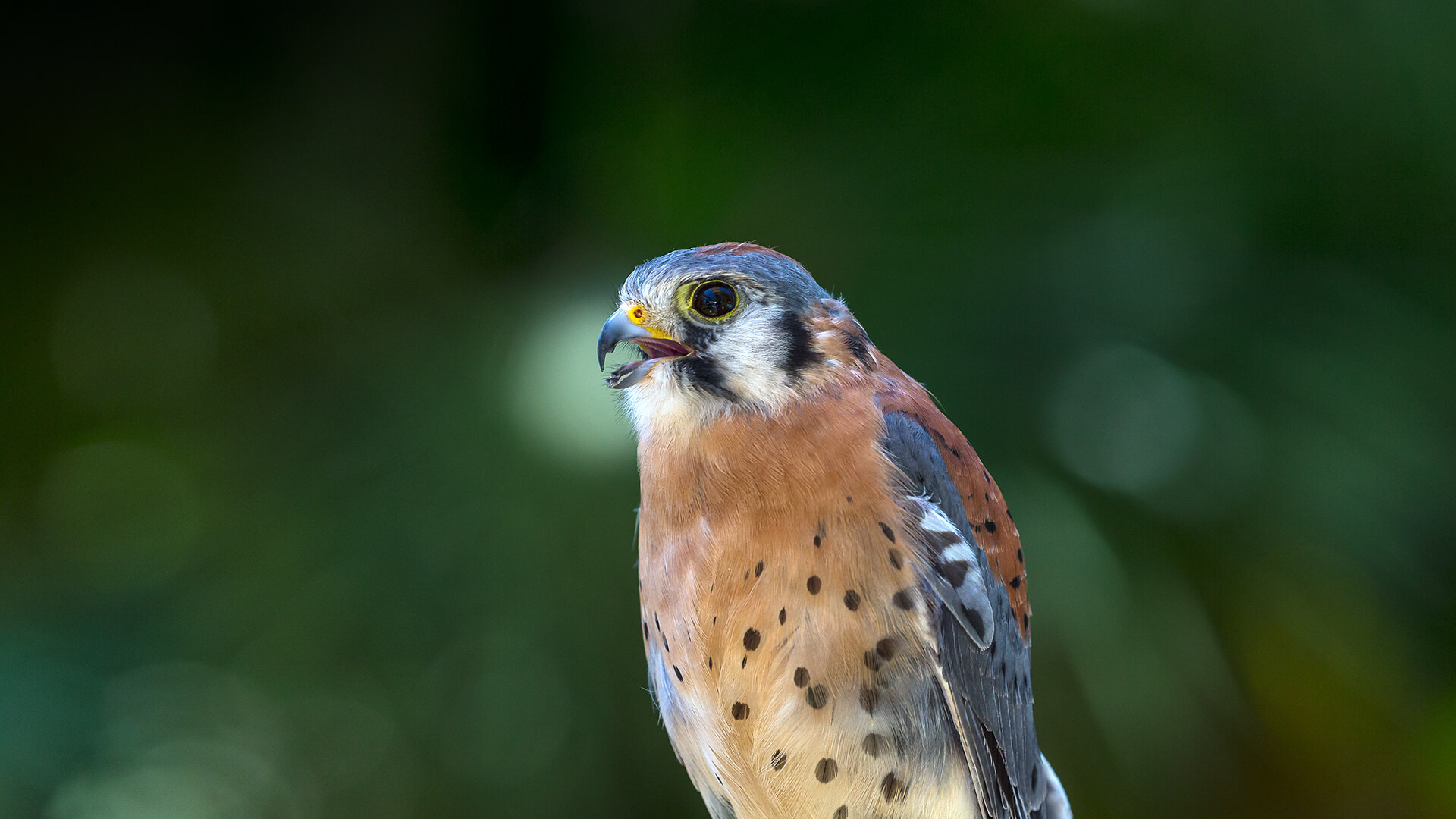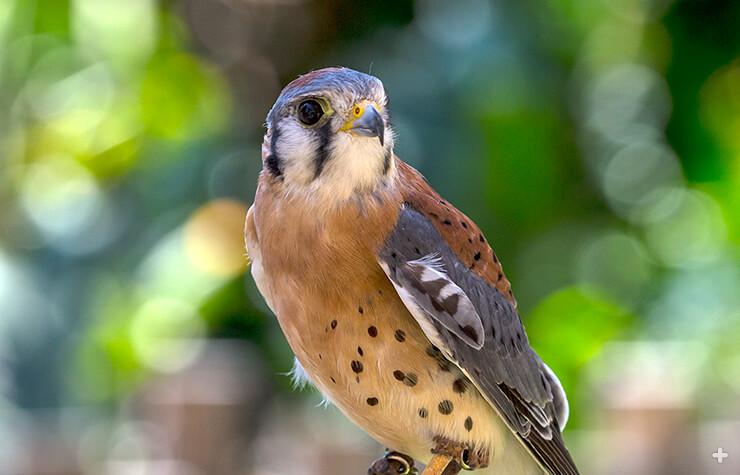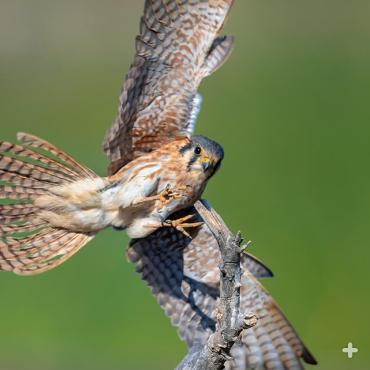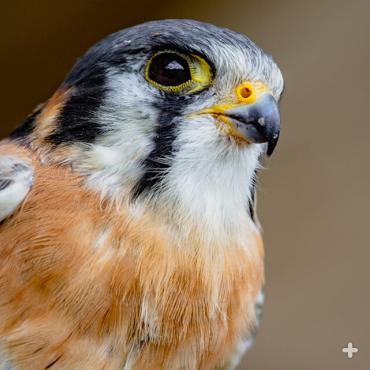San Diego Zoo Animals & Plants

ABOUT
Fly American. The smallest and most common falcon in North America, the American kestrel is a hardy little bird, having been able to flourish enough to include 17 subspecies, surviving in different environments and habitats across the Americas. Roughly the size of a mourning dove, the American kestrel sports a wingspan of 20 to 24 inches (51 to 61 centimeters).
Beauty of the sexes. American kestrels are one of only three raptors in North America where males and females look vastly different from each other, and females are 10 to 15 percent larger than males. It is the smallest and most delicate-looking American falcon, with long wings and tail. Its head is blue, brown, and white. Males are brightly colored, with reddish-brown backs, slate-blue wings adorned with black, and tan breasts with black spots. Females are brown streaked with black on the back, and white streaked with brown on the breast. The female has multiple bands on her tail. Both sexes have two bold, vertical stripes on their faces.
HABITAT AND DIET
Open to options. A variety of habitats seem to appeal to American kestrels, which make their homes in agricultural areas, grasslands, sagebrush, shrub-steppe, steppe, and dry forest zones.
Trees, please. Cavities in trees are the preferred place in which to build a nest; American kestrels are just as happy to sublet an old magpie nest or woodpecker hole. In the Southwest, holes in giant cacti serve the purpose just fine. They’ll even make do with rock crevices and nooks in buildings. These birds prefer a view—nest sites are usually 10 to 30 feet (3 to 9 meters) up. They will also use artificial nest boxes set up by conservationists.
Work smarter, not harder. Efficiency is the key to hunting, for this small-but-intense bird. Hunting for insects and other small prey in open territory, kestrels perch on wires or poles, or hover facing into the wind, flapping and adjusting their long tails to stay in place. They don’t swoop until they have a morsel in their sights. Kestrels are also known to hunt in groups to increase success, as well as keep youngsters protected.
Look out! Danger is everywhere, when you’re a little bird: kestrels are hunted by great-horned owls, red-tailed hawks, coyotes, bobcats, skunks, raccoons, crows, and ravens.
I’ll have a little of this, a little of that… The American kestrel diet is varied, including grasshoppers, beetles, dragonflies, moths, and caterpillars; along with mice, voles, small birds, lizards, frogs, earthworms, crayfish, and more.
FAMILY LIFE
Body (and) language. A shrill “killy-killy-killy” is the males’ most notable call, but kestrels also put their wings where their beaks are by employing a “flutter-glide” air dance to impress mates.
Creatures of habit. American kestrels typically are monogamous, and some pairs remain together for years. Many reuse nest sites, if they have successfully reproduced in that location before. A brood usually consists of four to six eggs, and incubation begins shortly before the last egg is laid. The male and female both help incubate the eggs, which hatch after about 30 days.
While the chicks are young (during the first two weeks after hatching), females tend to stay with the babies while the male brings food; after that, Mom joins the hunt. Young kestrels depend on their parents for food for two to three weeks after they fledge. During this time, the young sometimes pay the nest a visit or two, and remain close to their siblings.
CONSERVATION
Vast range. Found throughout most of North America, Central America, and South America, this resilient bird is classified as “Lower Risk.”








